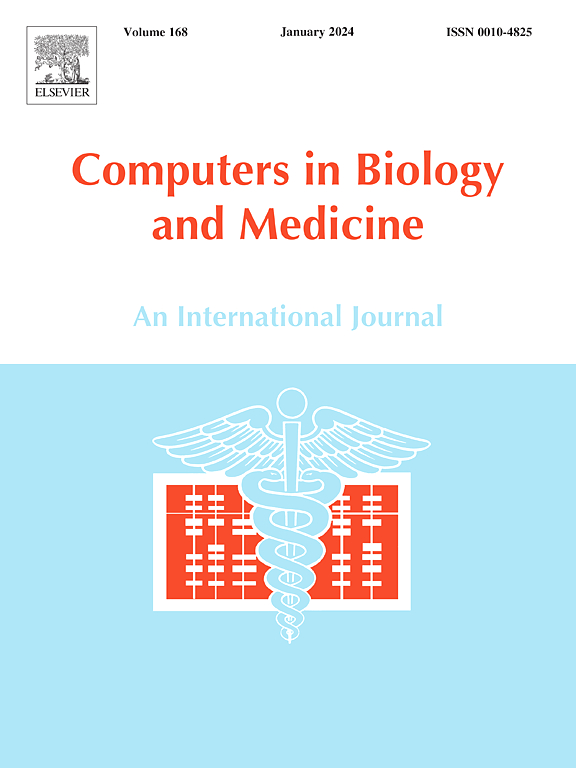FEGGNN:特征增强门控图神经网络用于鲁棒少射皮肤病分类
IF 6.3
2区 医学
Q1 BIOLOGY
引用次数: 0
摘要
准确、及时的皮肤病分类对于有效的皮肤科诊断至关重要。然而,标注图像的有限可用性,特别是对于罕见或新颖的条件,提出了重大挑战。尽管在计算机辅助诊断(CAD)中使用的少镜头学习(FSL)方法可以减少对大量标记数据的依赖,但它们的效果经常被这些挑战所削弱,特别是在少镜头任务序列中的灾难性遗忘缺陷。为了解决这些挑战,我们提出了一个特征增强门控图神经网络(FEGGNN)框架来改进皮肤疾病的少镜头分类。FEGGNN利用高效的非对称卷积网络(ACNet)从皮肤病变图像中提取高质量的特征映射,随后用于构建图,其中节点表示特征向量,边缘表示样本之间的相似性。FEGGNN的核心是在图形神经网络(GNN)框架内由多个聚合块组成,迭代地提炼节点和边缘特征。每个块通过聚合来自相邻节点的信息来更新节点特征,并通过边缘特征加权,以捕获上下文关系。同时,门控循环单元(gru)对任务之间的长期依赖关系进行建模,从而实现有效的知识转移和减轻灾难性遗忘。有效通道注意(ECA)机制通过关注最相关的特征通道,优化边缘权重计算,进一步增强边缘特征更新。这种迭代的细化过程使FEGGNN能够逐步增强特征表示,确保在不同的少量分类任务中的鲁棒性能。FEGGNN的卓越能力可以推广到未见过的类别,其最先进的性能证明了这一点,在2路5枪设置下,在Derm7pt上达到84.90%的准确率,在SD-198上达到95.19%的准确率。本文章由计算机程序翻译,如有差异,请以英文原文为准。
FEGGNN: Feature-Enhanced Gated Graph Neural Network for robust few-shot skin disease classification
Accurate and timely classification of skin diseases is essential for effective dermatological diagnosis. However, the limited availability of annotated images, particularly for rare or novel conditions, poses a significant challenge. Although few-shot learning (FSL) methods in computer-aided diagnosis (CAD) can decrease the dependence on extensive labeled data, their efficacy is often diminished by these challenges, particularly the catastrophic forgetting defect during the sequence of few-shot tasks. To address these challenges, we propose a Feature Enhanced Gated Graph Neural Network (FEGGNN) framework to improve the few-shot classification of skin diseases. The FEGGNN leverages an efficient Asymmetric Convolutional Network (ACNet) to extract high-quality feature maps from skin lesion images, which are subsequently used to construct a graph where nodes represent feature vectors and edges indicate similarities between samples. The core of FEGGNN consists of multiple aggregation blocks within the Graph Neural Network (GNN) framework, which iteratively refine node and edge features. Each block updates node features by aggregating information from neighboring nodes, weighted by edge features, to capture contextual relationships. Simultaneously, Gated Recurrent Units (GRUs) model long-term dependencies across tasks, enabling effective knowledge transfer and mitigating catastrophic forgetting. The Efficient Channel Attention (ECA) mechanism further enhances edge feature updates by focusing on the most relevant feature channels, optimizing edge weight computation. This iterative refinement process enables FEGGNN to progressively enhance feature representations, ensuring robust performance in diverse few-shot classification tasks. FEGGNN’s superior ability to generalize to unseen classes is demonstrated by its state-of-the-art performance, achieving 84.90% accuracy on Derm7pt and 95.19% on SD-198 in 2-way 5-shot settings.
求助全文
通过发布文献求助,成功后即可免费获取论文全文。
去求助
来源期刊

Computers in biology and medicine
工程技术-工程:生物医学
CiteScore
11.70
自引率
10.40%
发文量
1086
审稿时长
74 days
期刊介绍:
Computers in Biology and Medicine is an international forum for sharing groundbreaking advancements in the use of computers in bioscience and medicine. This journal serves as a medium for communicating essential research, instruction, ideas, and information regarding the rapidly evolving field of computer applications in these domains. By encouraging the exchange of knowledge, we aim to facilitate progress and innovation in the utilization of computers in biology and medicine.
 求助内容:
求助内容: 应助结果提醒方式:
应助结果提醒方式:


